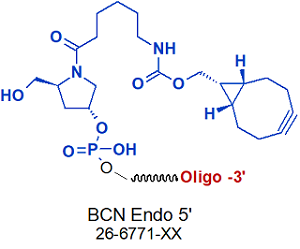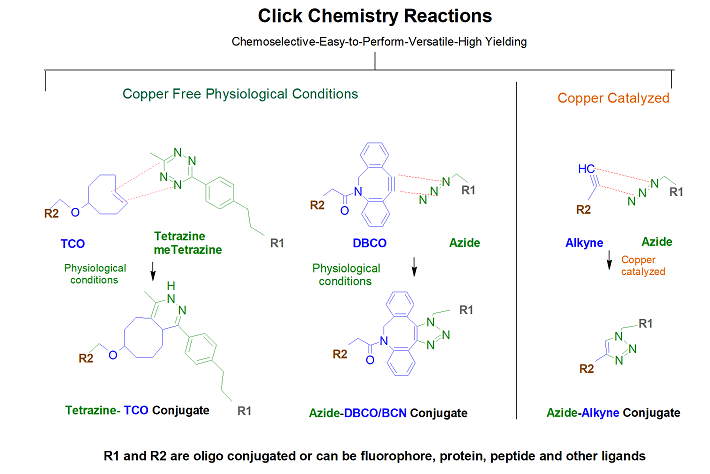In this section: Introduction | Quality Control | Purification | Modifications | Long Oligos | Price List
In this section: Introduction | Molecular Beacon FAQ's | Fluorescent Probes Price List | Other Fluorescent Molecular Probes
In this section: SPCT | DME SPCT Intro | Order DME TaqMan® Assays SPCT | SNP PCT Search | Gene Expression Assays | SPCT Design Center | GeneAssays
In this section: RNA Oligonucleotides | Quality Control | Purification | Modifications | RNAi Explorer™ Products and Prices | Custom RNAi | RNAi Design Guidelines | SmartBase™ siRNA Modifications | shRNA Explorer™
In this section: PCR Amplification & Analysis
In this section: Introduction | Genemer™ | GeneProber™ | Prober™ Gene Detection Kits | GScan™ Gene Detection Kits | Genemer™ Control DNA | Infectious Diseases
In this section: Gene Construction
In this section: Introduction | The Omni-Clean™ System | The Omni-Pure™ Plasmid Purification System | The Omni-Pure™ Genomic DNA Purification System | Viral DNA & RNA Purification | Microbial DNA Purification | Plant DNA Purification
In this section: Introduction | Quality Control | Purification | Modifications | Long Oligos | Price List
In this section: Introduction | Molecular Beacon FAQ's | Fluorescent Probes Price List | Other Fluorescent Molecular Probes
In this section: SPCT | DME SPCT Intro | Order DME TaqMan® Assays SPCT | SNP PCT Search | Gene Expression Assays | SPCT Design Center | GeneAssays
In this section: RNA Oligonucleotides | Quality Control | Purification | Modifications | RNAi Explorer™ Products and Prices | Custom RNAi | RNAi Design Guidelines | SmartBase™ siRNA Modifications | shRNA Explorer™
In this section: PCR Amplification & Analysis
In this section: Introduction | Genemer™ | GeneProber™ | Prober™ Gene Detection Kits | GScan™ Gene Detection Kits | Genemer™ Control DNA | Infectious Diseases
In this section: Gene Construction
In this section: Introduction | The Omni-Clean™ System | The Omni-Pure™ Plasmid Purification System | The Omni-Pure™ Genomic DNA Purification System | Viral DNA & RNA Purification | Microbial DNA Purification | Plant DNA Purification
BCN Endo 5' (Bicyclononyne) 5'
BCN Endo 5' (Bicyclononyne) 5'
Code : [BCN-5]

Modification : BCN Endo 5' (Bicyclononyne) 5'
Catalog Reference Number
Category
Modification Code
5 Prime
3 Prime
Internal
Molecular Weight (mw)
Extinction Coeficient (ec)
Technical Info (pdf)
Absorbance MAX
Emission MAX
Absorbance EC
26-6771
Click Chemistry
[BCN-5]
Y
N
N
468.49
-
PS26-6771.pdf
-
-
-
| Catalog No | Scale | Price | | 26-6771-05 | 50 nmol | $680.00 | | 26-6771-02 | 200 nmol | $680.00 | | 26-6771-01 | 1 umol | $785.00 | | 26-6771-03 | 2 umol | $1,120.00 | | 26-6771-06 | 5 umol | $2,400.00 | | 26-6771-10 | 10 umol | $3,615.00 | | 26-6771-15 | 15 umol | $4,914.00 |
| Discounts are available for BCN Endo 5' (Bicyclononyne) 5'! |
| Modification* Discount Price Structure |
|
1 site/order
|
List price
|
|
2 sites/order
|
10% discount
|
|
3 sites/order
|
20% discount
|
|
4 sites/order
|
30% discount
|
|
5-9 sites/order
|
50% discount
|
|
10+ sites/order
|
60% discount
|
|
*Exceptions apply
|
Click here for a complete list of Click Chemistry Oligo Modifications
Bicyclononyne (BCN) is stable and one of the most reactive cyclooctynes for copper-free click chemistry. Unlike dibenzocyclooctyne (DBCO), BCN is reactive both to azides (strain-promoted azide-alkyne cycloaddition, SPAAC) and tetrazines (inverse electron demand Diels-Alder reaction, IEDDA).
BCN-labeled oligonucleotides may be used for the conjugation to azide- or tetrazine-containing solid surfaces, polymers, and large proteins.
DBCO conjugation chemistry is based on the reaction of a dibenzylcyclooctyne (DBCO) linker with an azide linker to form a stable triazole. The dibenzocyclooctyne group (DBCO) allows Copper-free Click Chemistry to be done with live cells, whole organisms, and non-living samples. DBCO groups will preferentially and spontaneously label molecules containing azide groups (-N3). Within physiological temperature and pH ranges, the DBCO group does not react with amines or hydroxyls, which are naturally present in many biomolecules. Reaction of the DBCO group with the azide group is significantly faster than with the sulfhydryl group (-SH, thiol).
Cyclooctyne-based modifications offers the ease of copper-free click reagents. These are simple to use and has excellent click performance in 17 hours or less at room temperature. Gene Link offers DBCO NHS modification with various length of Carbon and PEG for preparing oligos inserting a DBCO group at any position within the oligonucleotide. DBCO NHS are post synthesis conjugation and requires a primary amino group. DBCO-modified oligos may be conjugated with azides in organic solvents, such as DMSO, or aqueous buffers. Depending on the azide used, the reaction will go to completion in 4-17 hours at room temperature.

- BCN Endo 5' (Bicyclononyne) 5'
|
|
